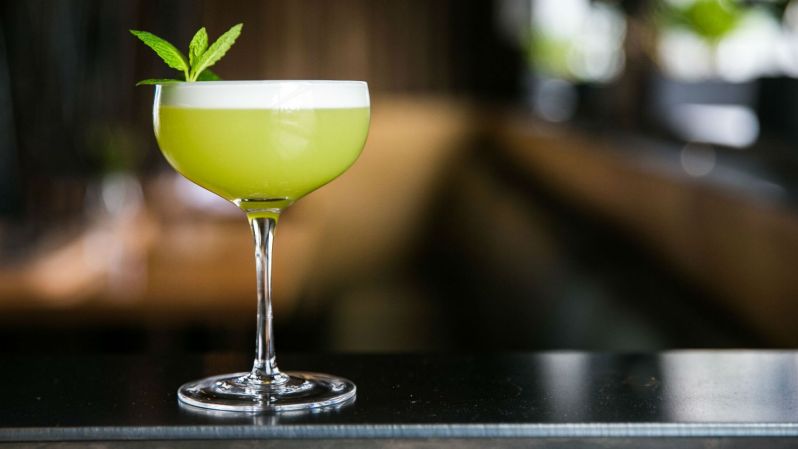When it comes to flavored vodkas, sometimes less is more. I think it’s safe to say that no one here is banging down the door for the latest diabetes-inducing vodka flavor (whoever came up with birthday cake-flavored vodka should be punished). When looking for a flavored vodka that adds to a drink without overwhelming it (or making you sick), you want something simple, something elegant. Take Prairie Organic’s Cucumber Vodka, for example.
Using organic corn vodka as a base (which is made from single-sourced corn on family-run farms in Minnesota), Prairie Organic then adds English cucumbers to create a spirit that smells and tastes as if biting into a fresh cucumber from the garden. The earthy, vegetal flavors go well with many others, so we thought: What all could we do with it?
A lot, apparently.
We sat down with Prairie Organic’s brand ambassador Ryan Van Splinter. Below, you’ll find some of the creative ways he and other bartenders have utilized Prairie Organic Cucumber vodka in their cocktails.

The Fennel Countdown
(Created by Sara Timmer, The Way Back, Denver)
- 1.5 oz Prairie Organic Cucumber Vodka
- 0.25 oz Yellow Chartreuse
- 0.75 oz fennel simple syrup
- 0.5 oz lemon juice
- Egg white
Method: Add all ingredients to a shaker without ice and dry shake. Add ice, shake again, and strain into a glass.
Christopher Oaxacan In The Garden
- 1 oz Prairie Organic Cucumber Vodka
- 0.25 oz Marca Negra Espadin
- 0.25 oz Pierre Ferrand Dry Curacao
- 0.75 oz lemon juice
- 1 oz tomato basil black pepper syrup*
Firewater Bitters
Method: Add ingredients to shaker with ice. Shake and double strain into a chilled cocktail glass. Garnish with cracked black pepper. If you want to kick it up a bit, use egg whites at the beginning with a dry shake before adding the other ingredients.
*Tomato basil black pepper syrup: In stock pot, add black pepper corns and cut cherry tomatoes with the amount of water you’re going to make your 1:1 simple syrup with. Add basil and bring to heat. Add sugar in same water quantity.
Last Word Riff
- 0.75 oz Prairie Organic Cucumber Vodka
- 0.75 oz Yellow Chartreuse
- 0.75 oz St. Germain
- 0.75 oz fresh lime juice
Method: Shake with ice and strain into a cocktail glass.
Under the Bridge
(Created by Sara Timmer, Bardo, Minneapolis; pictured in feature image)
- 1 oz Prairie Organic Cucumber Vodka
- 1 oz Prairie Organic Gin
- o.25 oz Green Chartreuse
- .5 oz Fresh lime juice
- .75 oz Cucumber syrup
- Pinch of salt
- Bar spoon yogurt
Method: Shake with mint and strain into a glass.
Watermelon Refresher
- 1.5 oz Prairie Organic Vodka
- 0.75 oz Fresh lime juice
- 0.25 oz Dragonfruit simple syrup*
- Watermelon and mint to muddle
- Soda water
Method: Muddle watermelon and mint in a rocks glass
*Dragonfruit simple syrup: Ball dragon fruit and cook in 1:1 with water.
Prairie G&T
- 1 oz Prairie Organic Gin
- 1 oz Prairie Organic Cucumber
- 0.6 oz fresh lime juice
- 0.5 oz rosemary simple syrup
Fever Tree Tonic Water
- Burnt rosemary sprig
Method: Shake gin, vodka, lime, and simple syrup together. Strain into a glass with ice. Top with tonic water and garnish with a burnt rosemary sprig.



